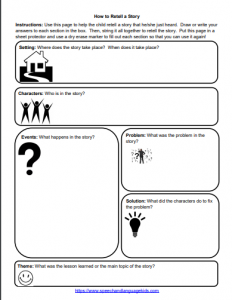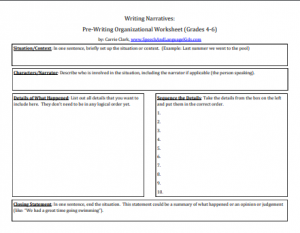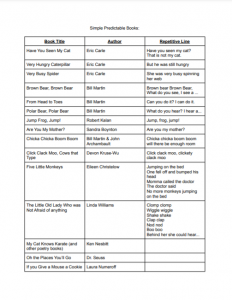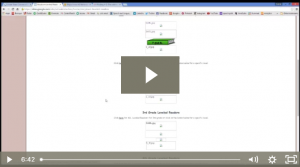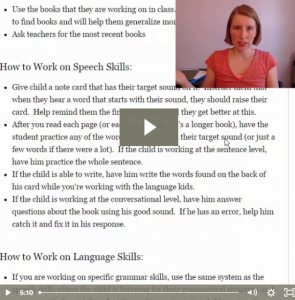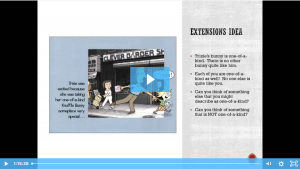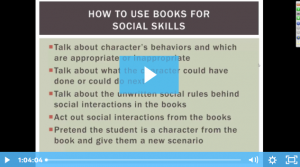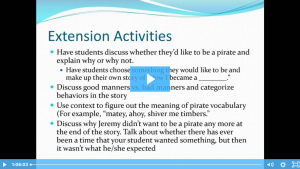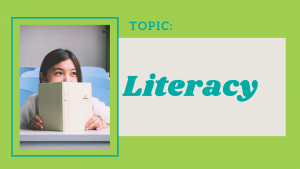Condition: Difficulty with Narratives
Definition:
The language skill called “narratives” refers to the child’s ability to use language to tell a story or to understand a story that has been told to them. This is an integral part to language and literacy development and is a skill that we often address with children with language delays and disorders. Not only do narratives serve as a wonderful bridge between spoken and written language, they also allow us to work on a variety of language skills at the same time.
Working on narratives also allows us opportunities to work on:
- comprehension (such as the meaning of vocabulary words)
- syntax (such as pronoun usage or regular/irregular past tense)
- pragmatic skills (such as awareness of the listener’s need for specific information)
- cognitive skills (such as cause and effect relationships and problem solving)
- general knowledge about literate language (such as story grammar elements and story organization)
Developmental Norms:
Looking for some developmental norms for narrative development? We love this great chart by Talking Together:
Click Here to Open the Stages of Narratives Chart
From Talking Together
Common Core Curriculum:
In addition to the general narrative development above, we also must consider how children are expected to use narratives in school. The following is a list of all of the Common Core Curriculum standards that relate to narratives.
Grade 1:
- Write narratives in which they recount two or more appropriately sequenced events, include some details regarding what happened, use temporal words to signal event order, and provide some sense of closure.
- Write narratives in which they recount a well elaborated event or short sequence of events, include details to describe actions, thoughts, and feelings, use temporal words to signal event order, and provide a sense of closure.
- Write narratives to develop real or imagined experiences or events using effective technique, descriptive details, and clear event sequences.
- Establish a situation and introduce a narrator and/or characters; organize an event sequence that unfolds naturally.
- Use dialogue and descriptions of actions, thoughts, and feelings to develop experiences and events or show the response of characters to situations.
- Use temporal words and phrases to signal event order.
- Provide a sense of closure
Grade 4:
- Write narratives to develop real or imagined experiences or events using effective technique, descriptive details, and clear event sequences.
- Orient the reader by establishing a situation and introducing a narrator and/or characters; organize an event sequence that unfolds naturally.
- Use dialogue and description to develop experiences and events or show the responses of characters to situations.
- Use a variety of transitional words and phrases to manage the sequence of events.
- Use concrete words and phrases and sensory details to convey experiences and events precisely.
- Provide a conclusion that follows from the narrated experiences or events.
Grade 5:
- Write narratives to develop real or imagined experiences or events using effective technique, descriptive details, and clear event sequences.
- Orient the reader by establishing a situation and introducing a narrator and/or characters; organize an event sequence that unfolds naturally.
- Use narrative techniques, such as dialogue, description, and pacing, to develop experiences and events or show the responses of characters to situations.
- Use a variety of transitional words, phrases, and clauses to manage the sequence of events.
- Use concrete words and phrases and sensory details to convey experiences and events precisely.
- Provide a conclusion that follows from the narrated experiences or events.
Grade 6:
- Write narratives to develop real or imagined experiences or events using effective technique, relevant descriptive details, and well-structured event sequences.
- Engage and orient the reader by establishing a context and introducing a narrator and/or characters; organize an event sequence that unfolds naturally and logically.
- Use narrative techniques, such as dialogue, pacing, and description, to develop experiences, events, and/or characters.
- Use a variety of transition words, phrases, and clauses to convey sequence and signal shifts from one time frame or setting to another.
- Use precise words and phrases, relevant descriptive details, and sensory language to convey experiences and events.
- Provide a conclusion that follows from the narrated experiences or events.
Grade 7:
- Write narratives to develop real or imagined experiences or events using effective technique, relevant descriptive details, and well-structured event sequences.
- Engage and orient the reader by establishing a context and point of view and introducing a narrator and/or characters; organize an event sequence that unfolds naturally and logically.
- Use narrative techniques, such as dialogue, pacing, and description, to develop experiences, events, and/or characters.
- Use a variety of transition words, phrases, and clauses to convey sequence and signal shifts from one time frame or setting to another.
- Use precise words and phrases, relevant descriptive details, and sensory language to capture the action and convey experiences and events.
- Provide a conclusion that follows from and reflects on the narrated experiences or events
- Write narratives to develop real or imagined experiences or events using effective technique, relevant descriptive details, and well-structured event sequences.
- Engage and orient the reader by establishing a context and point of view and introducing a narrator and/or characters; organize an event sequence that unfolds naturally and logically.
- Use narrative techniques, such as dialogue, pacing, description, and reflection, to develop experiences, events, and/or characters.
- Use a variety of transition words, phrases, and clauses to convey sequence, signal shifts from one time frame or setting to another, and show the relationships among experiences and events.
- Use precise words and phrases, relevant descriptive details, and sensory language to capture the action and convey experiences and events.
- Provide a conclusion that follows from and reflects on the narrated experiences or events.
- Write narratives to develop real or imagined experiences or events using effective technique, well-chosen details, and well-structured event sequences.
- Engage and orient the reader by setting out a problem, situation, or observation, establishing one or multiple point(s) of view, and introducing a narrator and/or characters; create a smooth progression of experiences or events.
- Use narrative techniques, such as dialogue, pacing, description, reflection, and multiple plot lines, to develop experiences, events, and/or characters.
- Use a variety of techniques to sequence events so that they build on one another to create a coherent whole.
- Use precise words and phrases, telling details, and sensory language to convey a vivid picture of the experiences, events, setting, and/or characters.
- Provide a conclusion that follows from and reflects on what is experienced, observed, or resolved over the course of the narrative.
- Write narratives to develop real or imagined experiences or events using effective technique, well-chosen details, and well-structured event sequences.
- Engage and orient the reader by setting out a problem, situation, or observation and its significance, establishing one or multiple point(s) of view, and introducing a narrator and/or characters; create a smooth progression of experiences or events.
- Use narrative techniques, such as dialogue, pacing, description, reflection, and multiple plot lines, to develop experiences, events, and/or characters.
- Use a variety of techniques to sequence events so that they build on one another to create a coherent whole and build toward a particular tone and outcome (e.g., a sense of mystery, suspense, growth, or resolution).
- Use precise words and phrases, telling details, and sensory language to convey a vivid picture of the experiences, events, setting, and/or characters.
- Provide a conclusion that follows from and reflects on what is experienced, observed, or resolved over the course of the narrative.
Evaluation:
Narrative skills are often evaluated as part of a complete language evaluation. The following are a few ways to evaluate narrative skills:
Formal, Standardized Testing:
There are some standardized assessment tools that can be used for to evaluate narratives. Here are a few (this is just a list of options, these have not be reviewed or used by The SLP Solution or its partners):
Informal Testing:
You can also evaluate narratives through informal means. These are less standardized but will give you the ability to provide prompts and teaching to see how quickly the child picks up the skill. You can also evaluate other language skills during an informal narrative assessment in order to gain a broader understanding of the child’s language skills. Here are a few ways you can do this:
- Language Sample: Ask the child to tell you a story (provide a prompt if necessary) and collect a language sample during the story.
- Story Retelling: Tell the child a story or read the child a book and then ask the child to repeat the story back to you with as many details as he/she can remember.
Here are some additional resources related to evaluations for this topic:
Suggested Goals and Materials:
When writing goals for narratives, consider the skills that the child needs to participate in his/her school curriculum. You can look at the Common Core Curriculum standards above or you can use the Curriculum for your local school district. Find out how the child is expected to use narratives and write your goals based on that. You can also include goals for other language forms or structures that you plan on addressing while working on narratives.
Therapy:
Here are some more resources and information that may help you when it comes to treating this condition.



